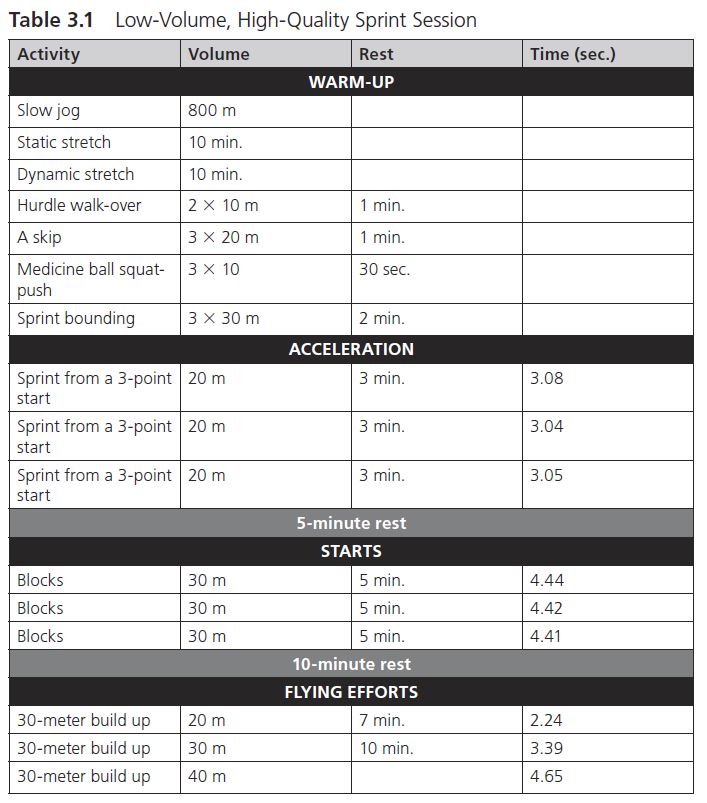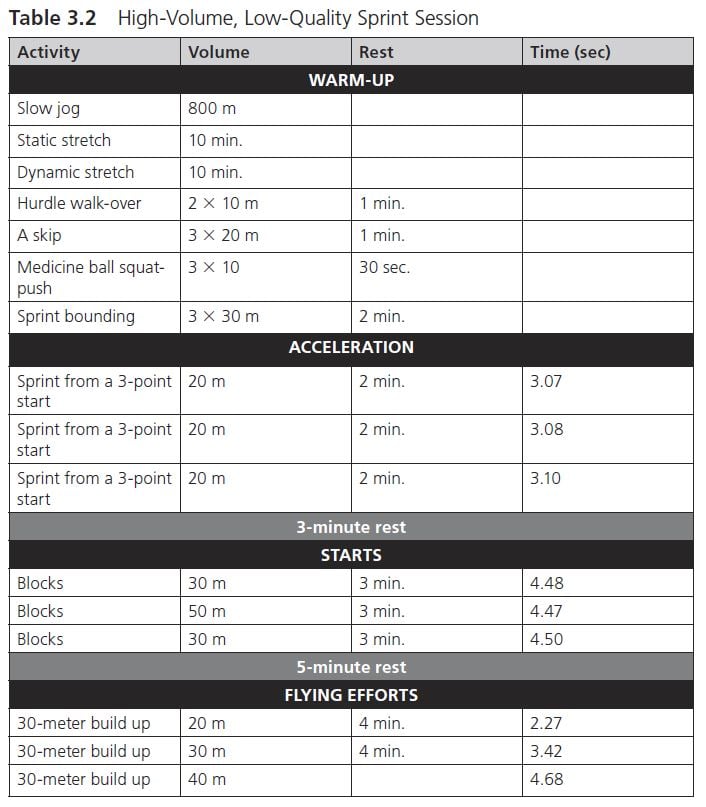Designing Speed Training Sessions
This book excerpt discusses how to maximize sprint quality during training sessions.
The following is an exclusive excerpt from the book Developing Speed, published by Human Kinetics. All text and images provided by Human Kinetics.
The greatest gains in sprint performance come from high-quality training characterized by a technical focus, high-intensity efforts, and long recovery periods. Another way to measure quality in sprinting is by how fast an athlete runs. In simple terms, poor speed is poor quality, so everything possible must be done to maximize sprint quality during sessions.
Maximizing sprint quality requires carefully planning of training volume not only for each session but also for longer training periods. If the weekly or monthly sprint volume is too great, the first sprint effort of a new session will be of poor quality because the athlete was unable to recover between sessions, and this may also increase the risk of injury. Tolerance of training volume is highly individual and is influenced by training history and genetic factors. However, generally speaking, 1,000 to 2,000 meters per week of acceleration and high-speed sprinting is typical.
Tables 3.1 and 3.2 outline two sample sprint sessions, including warm-up and drill sequences. Both sessions include common elements, but table 3.2 demonstrates the negative effect that inadequate rest can have on the athlete, despite the fact that the sessions are relatively low in total sprint volume.


One of the most important principles to understand when designing speed training sessions is the impact of high-intensity effort on an athlete. Sprint training applies a large stressor to the central nervous system and peripheral nervous system. Coaches may overlook or underestimate this because the total work (duration of effort or distance covered) is relatively small compared to other types of training. It is helpful to remember that the classic super-compensation curve is a theoretical model and that, in fact, each type of training stress elicits a different compensatory response. For example, most athletes can perform a nonsprinting running session and recover enough to repeat or exceed the intensity within 24 hours. However, evidence has shown that a typical sprint session, where intensities are 95 to 100 percent, often requires rest from sprinting for 72 hours or more and certainly not less than 48 hours. Elite sprinters who have performed at a personal-best level may need as much as 10 days of rest from sprinting. The ability to recover from a high-intensity sprint session is also determined by the volume of work carried out, which influences the total stress. For example, a high-intensity (95-100% of max speed) session of 300 meters requires less recovery time than a 750-meter session similar in nature.
With Developing Speed, the National Strength and Conditioning Association (NSCA) has created the definitive resource for developing speed training programs that optimize athletic performance. Including assessments and the application of speed training to eight specific sports, this authoritative guide provides all the tools needed for maximizing speed. The book is available in bookstores everywhere, as well as online at the NSCA Store.
- Privacy Policy
- Your Privacy Choices
- Terms of Use
- Retraction and Correction Policy
- © 2025 National Strength and Conditioning Association